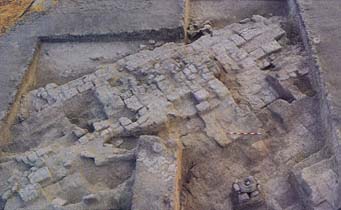Image Details

John Camp
As the Assyrian threat loomed large late in the eighth century, this wall was replaced with a 30-foot-thick mudbrick fortification. (Note how the red-and-white meter stick, right of center, is dwarfed by this wall.) The wall lacks a stone foundation and its mudbricks are rather crude—evidence of hasty construction in the face of attack. The thickness of the wall was intended to stop Assyrian battering rams, notorious for breaking through almost every city wall in the ancient Near East. It failed. The Assyrian emperor Tiglath-pileser III breached the walls of Rehov in 732 B.C.E.
